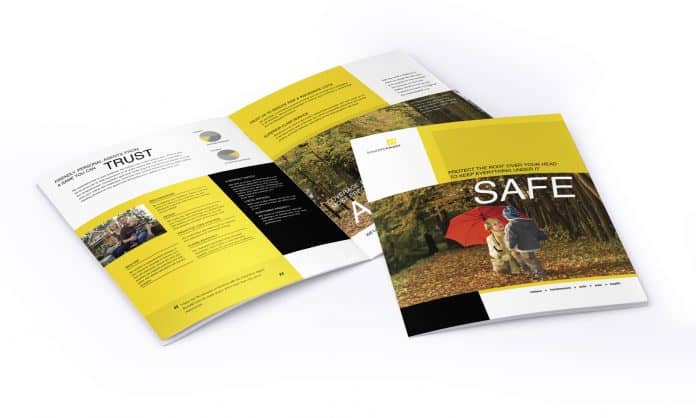Last updated on June 21st, 2024 at 10:27 am
To those who don’t work in the printing industry, saddle stitch booklet printing may seem like a fairly simple binding process. Fold sheets of paper in half to make the pages, add a cover, staple it all together in the fold, and you’re good to go – right?
Actually, it’s not that simple, in large part due to “creep.” If you’re wondering “What is creep in printing?”, it refers to the shift in paper that occurs when the document’s pages are folded inside each other. Since inserting folded pages is a key part of the saddle stitch binding technique, creep is a design issue that must be taken into account before doing the actual binding.

How creep affects saddle stitch booklets

Creep occurs because the trim margins of pages in inner signatures of saddle-stitched books are actually narrower than pages in outer signatures. A signature is a group of pages (usually four) printed on both sides of a single sheet of paper. All the signatures in a booklet are folded and inserted into each other. Then they are folded, bound, and cut to create the pages of the booklet.
If you do not account for creep in your design for saddle-stitch booklets, the content in the center of the booklet will be closer to the edge of the page than those at the beginning or end. The same goes for repeating elements such as page numbers, tabs, borders and more. This can cause misaligned borders and other problems that make the booklet look disjointed and poorly printed. In cases of severe saddle-stitch creep, which tends to happen with high page count and thicker paper stock, there is a possibility that over 1/16 can actually get trimmed off.
The amount of creep that occurs in a saddle stitch booklet varies according to the number of pages and thickness of the paper. The higher the page count, the more the pages will get pushed out due to creep.
Designing a booklet to compensate for the creep in saddle-stitch
In booklets of 40 pages or less, the creep can often be barely noticeable and doesn’t need to be accounted for. In booklets with more than 40, compensating for the inevitable creep requires incrementally shifting the page content in order to end up with a consistent outer margin.
Here’s an example that shows how the thickness of a booklet can affect saddle-stitch creep. Suppose your print project involves a 12-page booklet on 100lb book weight paper. This will result in a booklet that is 1/32” thick. A page number (or some other repeating graphic element) that is 1/8” from the edge of the page will only shift 1/76” in the center of the booklet. This would make the shift almost imperceptible except to the trained eye.
Now let’s see what happens with a 52 page booklet with a thickness of 3/16”. In this case, a graphic element near the outer edge of the page would move more than 1/16”, or about half the distance between its position in the center spread and the edge of the page. This amount of movement would certainly be noticeable and would not reflect well on the print quality of the booklet.
When designing a high page count booklet, keep in mind that the inner pages experience more creep than the outer pages. As a result, content on pages closer to the center of the booklet must shift inward more than on the outer pages. When moving the content, it’s important to have margins of sufficient width so that any artwork or graphics won’t end up too close to the edge of the booklet.
(Pro tip: avoid using images and borders that spread across two pages, as they can cause problems when attempting to line them up on adjacent pages.)
The thickness of the paper can also affect the amount of shifting needed to compensate for the creep in saddle-stitch. Thicker stocks will require more shifting, especially on the inner pages.
The Printivity approach to managing saddle-stitch creep
At Printivity, we require our customers to send in print-ready files for their print projects. This enables us to provide quick turnaround times while still delivering the highest quality printing. As discussed, saddle-stitch creep is generally not much of an issue with booklets of 40 pages or less. For the safety margin, we require customers to keep important text and images 1/8″ from the edge of the final dimension.
Saddle-stitch is a very popular method for binding booklets. However, if you don’t feel comfortable adjusting for creep or just don’t want to bother with it, there is a solution that eliminates the issue altogether – perfect bound book printing. Because perfect binding uses a strong adhesive rather than coils or staples, it produces no creep, no matter how thick the booklet. So there’s no need to account for creep when designing a perfect bound book.
Regardless of how you choose to handle saddle-stitch creep, you can count on Printivity for a professionally bound booklet printing with all the text aligned as it should be. For further assistance, please call our Customer Service Representatives at 1-877-649-5463.




